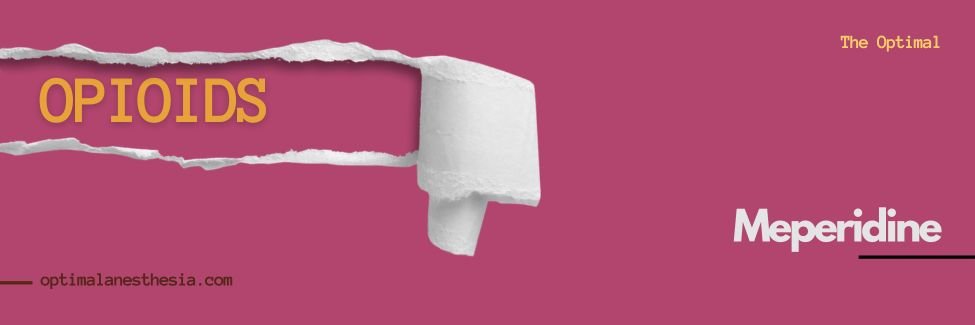Introduction
Meperidine, also known as pethidine, is a synthetic opioid agonist with distinct pharmacological properties. This article explores the pharmacology, pharmacokinetics, and side effects of meperidine.
Table 1: Characteristics of Meperidine
| Characteristic | Description |
|---|---|
| Structure | Derived from phenylepiperidine |
| Receptor Affinity | Acts on µ (m) and κ (k) opioid receptors |
| Chemical Structure | Contains tertiary amine, ester group, and lipophilic phenyl group |
| Intrathecal Use | Blocks sodium channels, suitable for intrathecal use |
| Similarity to Atropine | Possesses mild atropine-like antispasmodic effect |
Table 2: Pharmacokinetic Parameters of Meperidine
| Parameter | Description |
|---|---|
| Potency Compared to Morphine | About one-tenth as potent as morphine |
| Duration of Action | Shorter acting, lasting 2 to 4 hours |
| Equivalent Effects to Morphine | Produces equivalent sedation, euphoria, nausea, vomiting, and respiratory depression |
| Absorption | Absorbed from the gastrointestinal tract |
| Oral Usefulness | Limited due to extensive first-pass hepatic metabolism (up to 80%) |
Table 3: Metabolism of Meperidine
| Description | |
|---|---|
| Hepatic Metabolism | Extensive hepatic metabolism, including demethylation to normeperidine and hydrolysis to meperidinic acid |
| Elimination | Primarily via urinary excretion (pH-dependent) |
| Normeperidine | Active metabolite with an elimination half-time of 15 hours (35 hours in renal failure) |
| Accumulation Risk | Prolonged administration can lead to normeperidine accumulation |
Table 4: Clinical Uses of Meperidine
| Clinical Use | Description |
|---|---|
| Intrathecal Use | Suitable for intrathecal administration for surgical anesthesia due to sodium channel blocking properties |
| Antishivering Effects | Effective in suppressing postoperative shivering, possibly through k receptor stimulation |
| Delirium and Seizures | May occur with prolonged administration, attributed to normeperidine accumulation |
| Serotonin Syndrome | Risk when administered with antidepressant drugs that increase serotonin levels |
Table 5: Side Effects of Meperidine
| Side Effect | Description |
|---|---|
| Cardiac Effects | Modest atropine-like qualities, may increase heart rate |
| Myoclonus and Seizures | Risk of normeperidine toxicity with prolonged use |
| Serotonin Syndrome | Autonomic instability, confusion, agitation, hyperthermia, hyperreflexia when combined with certain antidepressants |
| Ventilatory Depression | Can be more pronounced than morphine |
| Neonatal Exposure | Rapid placental transfer, potential for neonatal exposure |
| Constipation and Urinary Retention | May be less severe than morphine |
| Ophthalmic Effects | Tends to cause mydriasis, dry mouth, and increased heart rate |
| Withdrawal Symptoms | Different pattern from morphine, quicker onset, shorter duration |
Conclusion
Meperidine, a synthetic opioid agonist, has unique characteristics and clinical uses, including intrathecal administration for surgical anesthesia and antishivering effects. However, its side effects and potential for normeperidine accumulation require careful consideration in clinical practice. Understanding its pharmacology and pharmacokinetics is essential for safe and effective use.


